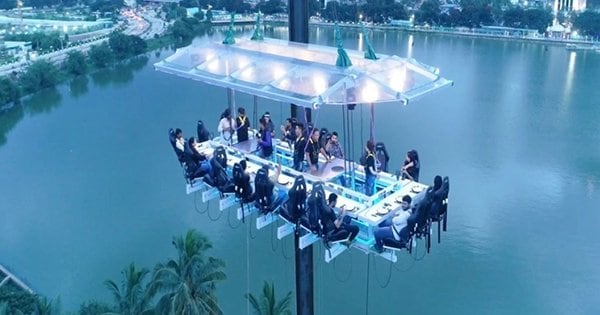
Welcome to the ultimate foodie challenge – creating mouthwatering dishes at a fly-in restaurant. As a chef, you have the unique opportunity to showcase your culinary skills in a remote location accessible only by air. While the setting may be unconventional, the expectations for exceptional food remain the same. In this guide, we will explore the key ingredients and techniques that will help you craft unforgettable dishes that will have your guests coming back for more. Refer: https://eatflyfuel.com.
Utilizing Local Ingredients
One of the most exciting aspects of working at a fly-in restaurant is the opportunity to work with local ingredients that may not be readily available in urban areas. The surrounding landscape can offer a bounty of fresh produce, meats, and seafood that can elevate your dishes to new heights. Here are some tips on how to make the most of local ingredients:
1. Establish Relationships with Local Suppliers
- Get to know local farmers, fishermen, and producers who can provide you with fresh, seasonal ingredients.
- Visit farmers' markets or attend food festivals to discover new suppliers and ingredients.
- Support the local community by sourcing ingredients locally, which can also help reduce your carbon footprint.
2. Experiment with Unique Flavors
- Challenge yourself to use ingredients that are indigenous to the region, such as wild game or foraged herbs.
- Try incorporating traditional cooking methods or spices that are characteristic of the local cuisine.
- Experiment with fusion dishes that combine local ingredients with international flavors for a unique dining experience.
Creative Menu Planning
When designing your menu for a fly-in restaurant, it's essential to strike a balance between offering familiar favorites and innovative creations. Here are some strategies to help you create a menu that will appeal to a diverse range of guests:
1. Cater to Dietary Restrictions
- Offer vegetarian, vegan, and gluten-free options to accommodate guests with dietary restrictions.
- Clearly label menu items that contain common allergens such as nuts, dairy, or shellfish.
- Be prepared to customize dishes to suit individual dietary needs or preferences.
2. Rotate Seasonal Specials
- Highlight seasonal ingredients with weekly or monthly specials that showcase the best of what the region has to offer.
- Keep your menu dynamic by introducing new dishes based on ingredient availability and customer feedback.
- Create themed tasting menus or special events to celebrate seasonal holidays or local festivals.
Mastering Cooking Techniques
In a fly-in restaurant setting, you may not have access to all the modern kitchen gadgets and appliances that you are accustomed to. However, this should not hinder your ability to produce high-quality dishes. Here are some tips to help you master cooking techniques with limited resources:
1. Embrace Outdoor Cooking
- Utilize a grill, smoker, or campfire to add smoky flavors to your dishes.
- Experiment with different cooking methods such as roasting, grilling, or steaming over an open flame.
- Invest in portable cooking equipment that is suitable for outdoor use, such as a camping stove or Dutch oven.
2. Prioritize Knife Skills
- Sharpen your knife skills to ensure efficient and precise prep work in the absence of fancy kitchen gadgets.
- Practice proper knife techniques such as chopping, dicing, and julienning to achieve uniform cuts and enhance the visual appeal of your dishes.
- Maintain your knives regularly to keep them sharp and in optimal condition for long-term use.
Presentation and Plating
The presentation of your dishes is just as important as their taste. At a fly-in restaurant, you have the opportunity to showcase your creativity and attention to detail through artful plating. Here are some tips to help you elevate your dishes visually:
1. Use Local Ingredients as Garnishes
- Garnish your dishes with fresh herbs, edible flowers, or microgreens that are sourced locally.
- Incorporate colorful fruits or vegetables as natural accents to add vibrancy to the plate.
- Experiment with different textures and shapes to create visually appealing presentations.
2. Pay Attention to Plate Composition
- Balance colors, shapes, and sizes to create visually striking plates that are pleasing to the eye.
- Consider using negative space on the plate to highlight the main components of the dish.
- Practice different plating techniques such as stacking, layering, or scattering to add visual interest to your creations.
By utilizing local ingredients, creative menu planning, mastering cooking techniques, and paying attention to presentation and plating, you can create delicious dishes that will delight your guests at a fly-in restaurant. Embrace the challenges and opportunities that come with cooking in a remote location, and let your passion for food shine through in every dish you serve.